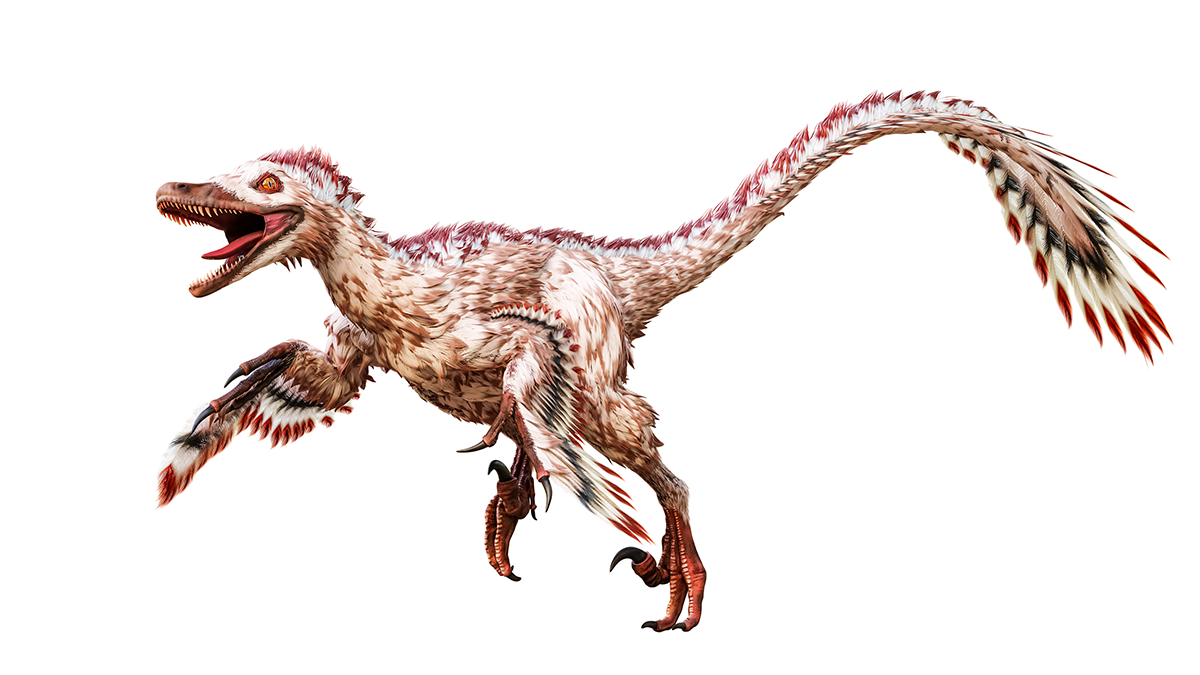Just as the reign of the dinosaurs ended when an asteroid slammed into Earth 66 million years ago, the animals’ rise to dominance was set in motion by another twist of geophysical fate. Short-lived, but intense, volcanic winters—colder-than-usual conditions triggered by volcanic eruptions—sent temperatures plummeting at the end of the Triassic Period, according to new research published in Science Advances that uncovered evidence of freezing conditions 202 million years ago. Dinosaurs, many of which were primitively insulated with either feathers or body hair, were able to weather the cold much better than other animals.
Pebbles in an Ancient Lake
In 2016, Paul Olsen, a geologist at the Lamont-Doherty Earth Observatory at Columbia University, and his colleagues convened in the Junggar Basin in northwestern China. The striated cliffs of the basin—a riot of colorful sediments—revealed fossilized remains of mollusks, fish, and shrimp, evidence that the area was once a lake. Given the Junggar Basin’s lacustrine history, its sediments might have preserved something known as ice-rafted debris, Olsen and his collaborators hypothesized.

As its name suggests, ice-rafted debris is bits of material, usually sand- to pebble-sized rocks, that has been transported over a body of water by ice. When ice forms on the shorelines of a lake, for instance, it entrains debris and eventually floats away from shore. When the ice ultimately melts, the material within it sinks to the bottom of the lake, explained team member Clara Chang, a paleoclimatologist at Lamont. “There’s not a lot of ways to move a pebble from the edge of a lake into the middle. One of the only ways is through ice.”
“This far back in time, there aren’t a lot of ways to figure out what the climate was.”
Over time, a lake can dry up and leave behind that coarse, ice-rafted debris, which stands out in stark contrast to the fine-grained sediments that typically blanket the bottom of a deep lake.
Ice-rafted debris is a valuable diagnostic of past climatic conditions, particularly in the deep past like the Triassic, said Chang. “This far back in time, there aren’t a lot of ways to figure out what the climate was.”
Chang developed a technique to separate the Junggar Basin sediments without producing additional material. That’s critical, said Olsen. “You don’t want to create a whole new grain size distribution by the way you disaggregate the material.” When the team analyzed the grains using laser diffractometry, which yielded estimates of the grains’ sizes based on how they scattered blue and red laser light, they found the bimodal distributions characteristic of ice-rafted debris.
Although freezing temperatures during the Late Triassic have been suggested in climate models, finding this ice-rafted debris provides some of the first empirical evidence of those conditions, the team proposed. (Olsen has also suggested that a sandstone slab unearthed in Connecticut shows evidence of freezing in the tropics during a similar time period.)
Cooling After Volcanism
Temperatures 10°C below normal could have been plausible and were likely triggered by a series of volcanic winters, Olsen and his collaborators suggest. The culprit, the researchers believe, was the Central Atlantic Magmatic Province, a large region that was volcanically active during the Late Triassic. Multiple eruptions could have released prodigious quantities of magma, carbon dioxide, and sunlight-blocking aerosols. “They’re literally orders of magnitude bigger than any scale eruption we see today,” said Paul Wignall, a paleontologist at the University of Leeds in the United Kingdom who was not involved in the research.
And although all that carbon dioxide would have warmed the planet, there would have been a net cooling effect, at least for a few years, because of all the aerosols lingering in the atmosphere, according to Olsen and colleagues. “That effect can overwhelm the effects of global warming,” said Olsen.
Insulation to the Rescue
The animals that would have been able to weather a climatic shift would have been ones whose bodies were insulated in some way. There’s evidence suggesting that many dinosaurs, ranging from velociraptors to tyrannosaurs, had some sort of primitive insulation. Those early feathers or fur are what allowed dinosaurs to survive the freezing conditions of the Late Triassic, Olsen and his colleagues concluded.

Other animals, including crocodilians and their relatives, were dominant land animals in tropical and temperate regions but didn’t have insulation and therefore didn’t fare nearly as well. In fact, “they were almost completely wiped out” during the Triassic-Jurassic extinction event, said Olsen.
But dinosaurs generally did just fine, and that’s why they became the dominant species on land during the Jurassic.
Dinosaurs had a good run, said Wignall. Their abrupt demise—caused by an asteroid impact at the end of the Cretaceous—is somewhat fitting given how they rose to prominence, he said. “It’s ironic that dinosaurs owe their success to a mass extinction.”
—Katherine Kornei (@KatherineKornei), Science Writer
This news article is included in our ENGAGE resource for educators seeking science news for their classroom lessons. Browse all ENGAGE articles, and share with your fellow educators how you integrated the article into an activity in the comments section below.


